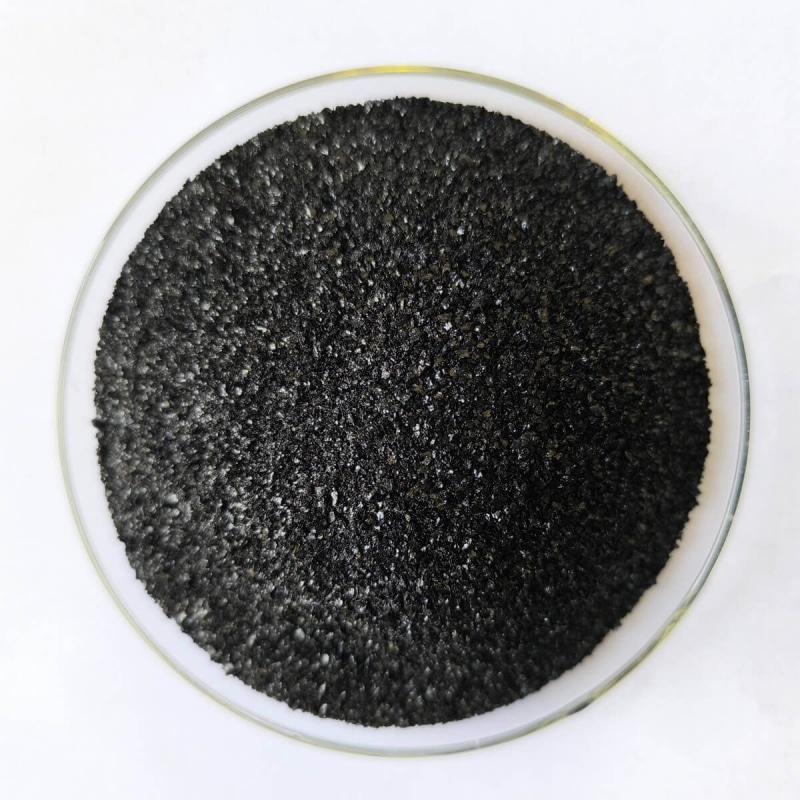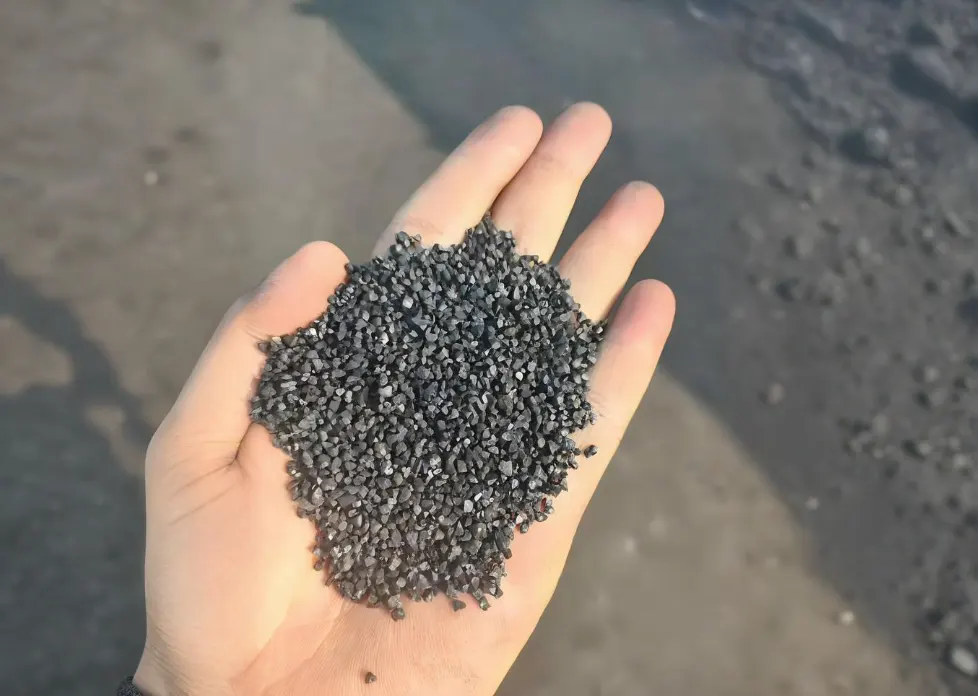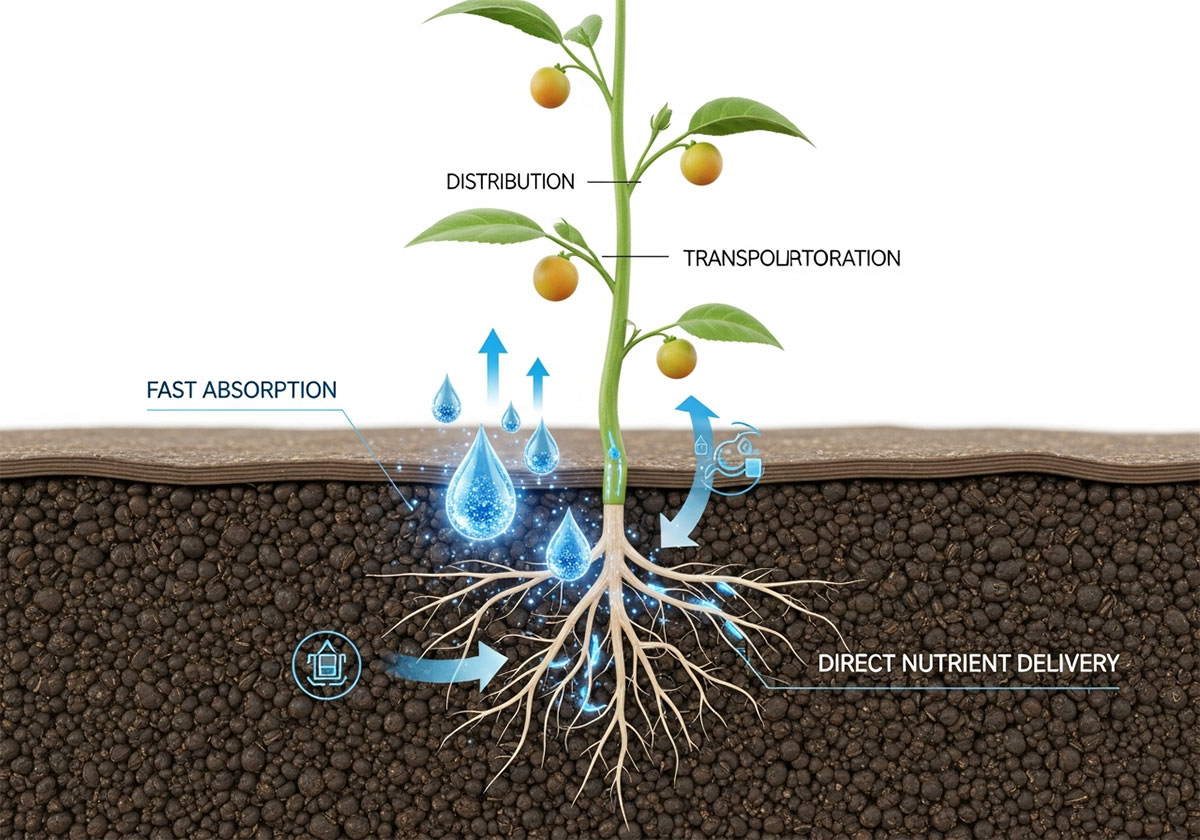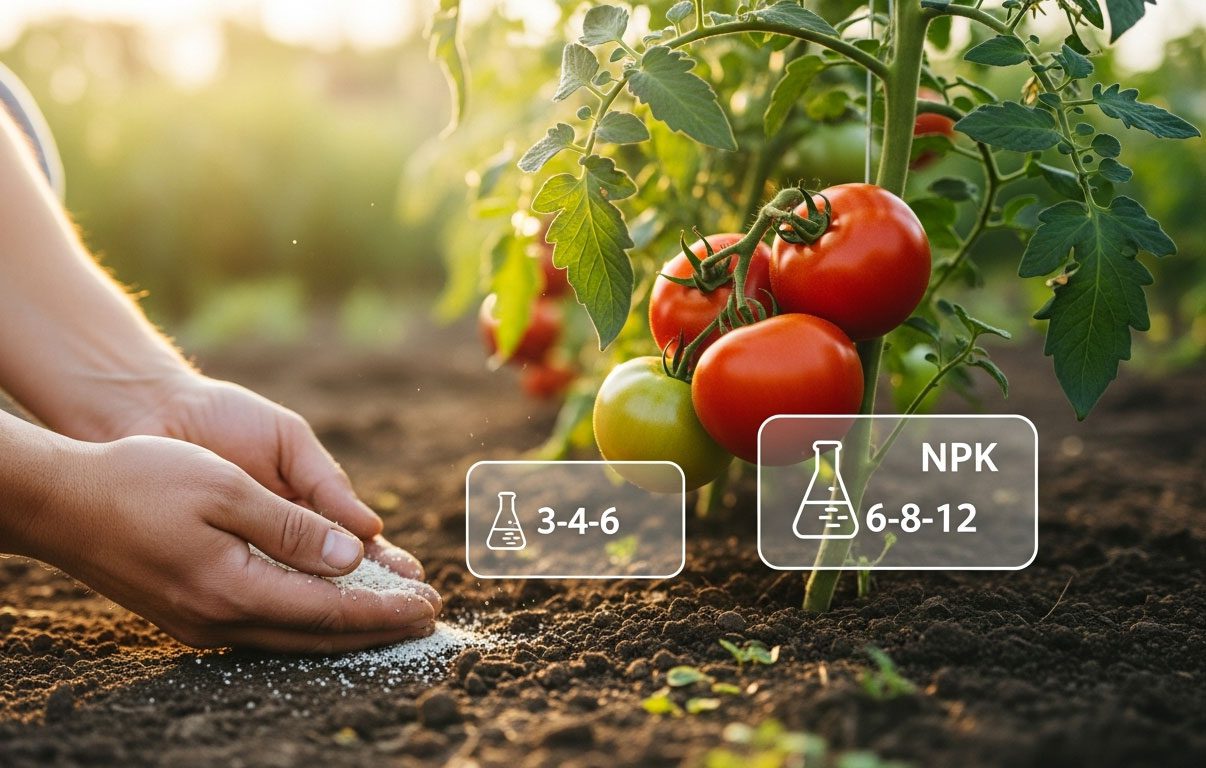table of contents
- Introdução ao Ácido Fúlvico Potássico
- Como o ácido fúlvico potássico funciona no solo e nas plantas
- Benefícios do uso de ácido fúlvico potássico
- Usos comuns na agricultura e horticultura
- Como usar fertilizante de ácido fúlvico potássico
- Por que escolher o fertilizante ácido fúlvico potássico Rutom Bio?
- Environmental & Economic Advantages
- Conclusão
- Perguntas frequentes
Introduction to Potassium Fulvic Acid
Potassium fulvic acid is also called potash fulvate, it has two kinds of products according to the raw material differences. One is mineral sourced, and the other is biochemically produced.
They are not totally the same products based on our studies.

What is Fulvic Acid?
There are mainly two sources of fulvic acid: one is mineral-derived fulvic acid, and the other is biochemical fulvic acid.
Fulvic acid from minerals is an organic fertilizer and soil amendment that is used to fix agricultural soil problems. It is a type of humic acid that is made up of large molecules and comes mostly from mineral materials that are high in fulvic acid, like lignite, weathered coal, and peat. The fulvic acid molecule has active functional groups that dissolve well in water, like hydroxyl groups and carboxyl groups. These groups are easy for plants to take in. A high-quality soil amendment and fertilizer synergist, it can raise the pH level of the soil and help it hold more water and fertilizer.
On the other hand, biochemical fulvic acid mainly contains amino acids, organic acids, fulvic acid, and other components. Its main functions include, in addition to the effects exerted by fulvic acid itself, the provision of energy and nutrients by organic acids, organic matter, and other substances to support the reproduction of soil microorganisms.
What is Potassium Fulvic Acid (Potassium Fulvate)?
Similarly, potassium fulvate is also divided into mineral-derived potassium fulvate and biochemical potassium fulvate.
About making potassium fulvate from minerals, you can start with mineral materials like lignite and weathered coal, which have a lot of fulvic acid, it is usually over 30%. If you want to get high-purity fulvic acid from these raw materials, you should use alkaline solutions to dissolve and precipitate fulvic acid. Then it can be obtained through purification. Then, potassium fulvate is produced via a potassification reaction (using NaOH and KOH), and finally, the product is dried and formed into solid potassium humate finished products.
Biochemical potassium fulvate, on the other hand, is made in a different way. Microbial enzymes break down cellulose and lignin in straw and bagasse. After enzymatic hydrolysis and extraction, bio-enzymatically hydrolyzed fulvic acid is turned into a liquid. After that, a potassium chloride solution is added to start a reaction that makes liquid potassium fulvate. After the pH value is changed, the liquid product goes through spray drying to make solid biochemical fulvic acid products.
When comparing potassium fulvate from minerals to potassium fulvate from biochemicals, the first is better at improving soil and working with fertilizers to make them work better. In terms of giving microorganisms energy and nutrients and encouraging them to reproduce, mineral-derived potassium fulvate is only a little bit better.
Fulvic vs Humic Acid: Key Differences
Humic acid is a general term for three components: fulvic acid, humic acid (brown humic acid), and ulmic acid (black humic acid). Fulvic acid is a type of humic acid; it is also the one with the highest activity and best solubility and an important component of humic acid. In a strict sense, humic acid mostly means ulmic acid (black humic acid).
The different aspects:
- Solubility: Humic acid (in a broad sense) can only dissolve in alkaline solutions; it does not dissolve in water or acidic solutions. Fulvic acid, on the other hand, can dissolve in water, acidic solutions, and alkaline solutions.
- Molecular Weight: Humic acid (in the broad sense) has a big molecular weight and a complicated structure. Fulvic acid, on the other hand, is a small molecule with a simple structure.
- Color: Humic acid is grayish-black, while fulvic acid is brownish-yellow or black.
- Functional Groups: Fulvic acid has a lot of functional groups, while humic acid (in the broad sense) only has a few, like carboxyl groups and hydroxyl groups.
- Stability: Humic acid is very stable, but fulvic acid is not as stable.
- Biological Activity: Humic acid (in a broad sense) doesn’t do much in living things. Its main jobs are to hold onto water and fertilizer. Fulvic acid, on the other hand, has a lot of biological activity, like helping plants grow.
How Potassium Fulvic Acid Works in Soil and Plants
The mechanism of action of potassium fulvate fertilizer at the soil and crop levels is mutually reinforcing, with the ultimate effect of improving soil quality and promoting biological growth.
Soil Improvement: 3 Key Functions
1.1 Enhancing the physical structure of soil by encouraging the formation of aggregates and increasing the soil’s ability to hold water and fertilizer
Aggregates that are 0.25 to 10 mm in size are the most important part of a good soil physical structure. Potassium fulvate fertilizer does this by forming hydrogen bonds and ionic bonds with positive charges in the soil (via calcium, magnesium ions, etc.). The negatively charged macromolecular colloids of potassium fulvate bind soil particles into stable aggregate structures. The inside of these aggregates is porous, which makes the soil more permeable and better at holding water and fertilizer. This process also helps to keep the soil from becoming too compacted.
1.2 Adjusting Soil Chemical Properties by Regulating pH and Reducing Heavy Metal Risks
The amphoteric colloidal nature of potassium fulvate is critical to its role as a soil regulator:
Buffering soil pH: When soil contains excessive hydrogen ions (H⁺), the alkaline groups in potassium fulvate neutralize H⁺; when there is an overabundance of hydroxyl ions (OH⁻) in the soil, its carboxyl groups release H⁺. Ultimately, this adjusts the soil pH to an optimal range.
Reducing the bioavailability of heavy metals: The carboxyl and hydroxyl groups in potassium fulvate can chelate heavy metals such as lead (Pb), chromium (Cr), and mercury (Hg) in the soil. This prevents heavy metals from being absorbed by crops and avoids contamination of soil and groundwater.
1.3 Giving microorganisms carbon sources, improving the structure of microbial communities, and encouraging microbial activity in the soil
Microorganisms in the soil break down organic matter, fix nitrogen, and dissolve phosphorus. Potassium fulvate provides high-quality carbon sources and a favorable microenvironment for these microorganisms:
- Carbon source supply: Fulvic acid is a small-molecular-weight organic carbon that can be used as a nutrient source by beneficial microorganisms, promoting their reproduction.
- Microbial community optimization: The growth of good bacteria stops the growth of bad bacteria (because they compete with each other) and at the same time encourages symbiosis between rhizobacteria and crop roots.
- Decomposition of organic matter: More active microbes speed up the breakdown of organic materials in the soil, like crop straw and plant residues, turning them into soil fertility.
2. Crop Growth Promotion: Main Benefits
2.1 Encouraging root growth, cell division, and the formation of root hairs
Fulvic acid helps roots grow by controlling hormone levels and how cells use energy:
Potassium fulvate makes auxin receptors in root cells work, which helps cells divide and grow longer. It also helps make lateral roots and root hairs.
It makes the root system better at taking in water and nutrients by making root vitality enzymes work harder.
It also encourages roots to secrete phytoalexins, strengthening root stress resistance, inhibiting pathogen invasion, and alleviating continuous cropping obstacles.
2.2 Enhancing Crop Growth by Boosting Photosynthesis and Increasing Chlorophyll/Photosynthate Accumulation
Fulvic acid improves photosynthetic efficiency by regulating photosystem components and enzyme activity:
Potassium fulvate chelates iron (Fe) and magnesium (Mg)—core components of chlorophyll—increasing the content of chlorophyll a and chlorophyll b and promoting chlorophyll synthesis.
It speeds up the process of fixing carbon dioxide and converting ATP energy by making ribulose-1,5-bisphosphate carboxylase/oxygenase (Rubisco, an important enzyme in photosynthetic carbon assimilation) and ATP synthase work better. This leads to more photosynthates (like sucrose and starch) being stored.
At the same time, it stops chlorophyllase from working in leaves, which lengthens the photosynthetic cycle of healthy leaves and slows down the process of leaf senescence.
2.3 Regulating Physiological Metabolism and Resisting Adverse Stresses to Enhance Crop Stress Tolerance
Potassium fulvate improves crops’ tolerance to stresses such as drought, low temperatures, and salinization by inducing the expression of stress-resistance genes and accumulating osmotic adjustment substances.
2.4 Improving Crop Quality by Regulating Nutrient Allocation and Metabolic Direction
Potassium fulvate enhances crop quality (including flavor, nutritional value, and storage resistance) by optimizing nutrient absorption and regulating secondary metabolism. Examples include:
- Adding more vitamins and sugar;
- Cutting down on the amount of nitrate;
- Encouraging the fruit epidermis cell wall to get thicker to make it more resistant to storage.
Benefits of Using Potassium Fulvic Acid
As stated above, potassium fulvate is very helpful for improving soil because it encourages the growth of helpful microorganisms, makes crops healthier, and makes crops better.
Common Uses in Agriculture and Horticulture
Potassium fulvate is used in farming because it takes advantage of the special properties of fulvic acid. Fulvic acid is very important for reducing the damage that chemical fertilizers do to plants, lowering the levels of heavy metals in soil, encouraging the growth of soil microorganisms, making it easier to grow crops in the same place over and over again, and improving crops by increasing their starch, sugar, and flavor. Meanwhile, potassium, as an essential nutrient for crops, is involved throughout the entire growth cycle of crops.
In horticulture, many horticultural products are currently cultivated in greenhouses, which isolate the soil from rainwater leaching. This gives rise to a problem: as crops absorb nutrients from fertilizers, the soil’s pH balance is easily disrupted. Therefore, when potassium fulvate is applied, its function of adjusting soil pH can exert a significant effect.
How to Use Potassium Fulvic Acid Fertilizer
Due to its excellent water solubility, potassium fulvate is usually used as a water-soluble fertilizer and is suitable for irrigation fertilization, foliar spraying, drip irrigation fertilization, and other application methods. For most uses, you mix one part potassium fulvate with 800 to 1200 parts of water.
Potassium fulvate can also be used as a raw material and added to fertilizer mixes.
Why Choose Rutom Bio. Potassium Fulvic Acid Fertilizer?
Rutom Biotechnology Co., Ltd. has a lot of experience in research and development. It makes the most of potassium fulvate’s abilities and creates the best formulations for different types of crops to get the best results in farming.
Environmental & Economic Advantages
Potassium fulvate contains fulvic acid, which is not harmful to the environment or living things. This means it won’t hurt crops by making weeds grow too quickly. Potassium fulvate can also chelate heavy metals, which has a good effect on the environment.
Potassium fulvate is very active, and crops absorb it quickly, so you can get good results with a small amount. This makes it a product that is very cost-effective.
Conclusion
Potassium fulvate is a multi-functional fertilizer that adjusts soil conditions, promotes microbial reproduction, and enhances crop health and quality. Additionally, it is a fertilizer with excellent cost-effectiveness.
FAQs
Q1: Differences Between Potassium Fulvate and Potassium Humate
The main difference lies in the distinct functional characteristics of the two substances—humic acid and fulvic acid—they contain.
Q2: Application Methods of Potassium Fulvate
It is recommended to apply potassium fulvate for root absorption or foliar spraying.
Q3: Which Crops Are Suitable for Potassium Fulvate Application?
Potassium fulvate is suitable for application on all crops.
Q4: Is Potassium Fulvate Hygroscopic?
Potassium fulvate is highly hygroscopic. It is recommended to use up the product as soon as possible after opening the package.





